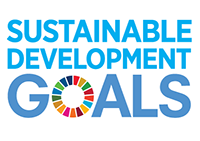Gini Index
Description:
Gini Index, Adjusted Household after-tax income
Methods and Limitations:
The Gini index is a measure of income inequality.
The Gini coefficient is a number between zero and one that measures the relative degree of inequality in the distribution of income. The coefficient would register zero (minimum inequality) for a population in which each person received exactly the same adjusted household income and it would register a coefficient of one (maximum inequality) if one person received all the adjusted household income and the rest received none. Even though a single Gini coefficient value has no simple interpretation, comparisons of the level over time or between populations are very straightforward: the higher the coefficient, the higher the inequality of the distribution. (Statistics Canada).
“Although there are no internationally defined standard cut-off values, it’s commonly recognized that Gini index<0.2 corresponds with perfect income equality, 0.2–0.3 corresponds with relative equality, 0.3–0.4 corresponds with a relatively reasonable income gap, 0.4–0.5 corresponds with high income disparity, above 0.5 corresponds with severe income disparity.” (UNICEF)
The boundaries and names of census geographies can change from one census to the next. In order to facilitate data comparisons between censuses, previous census data have been adjusted to reflect as closely as possible the 2021 boundaries of these areas. The methodology used for this adjustment involved spatially linking blocks of previous censuses (concordance to the 1996 Census used the 1996 enumeration areas to the 2021 boundaries). A previous census block was linked to the 2021 area within which its representative point fell. A limited number of interactive linkages were completed to further enhance the adjustment in certain areas. For some census geographies, it was not possible to reflect the 2021 boundaries. The 2021 boundaries may not be reflected as there was no previous census block to assign to the 2021 area. As well previous census data for some 2021 areas may not be available due to the fact that the concordance did not produce an accurate representation of the 2021 area.
Source:
Statistics Canada. Table 98-10-0097-01 Income inequality statistics across Canada: Canada, provinces and territories, census metropolitan areas and census agglomerations with parts

 Gini Index in the Sustainable Development Goals
Gini Index in the Sustainable Development Goals
Click on the SDG to reveal more information
1. End poverty in all its forms everywhere
Extreme poverty rates have been cut by more than half since 1990. While this is a remarkable achievement, one in five people in developing regions still live on less than $1.90 a day, and there are millions more who make little more than this daily amount, plus many people risk slipping back into poverty.
Poverty is more than the lack of income and resources to ensure a sustainable livelihood. Its manifestations include hunger and malnutrition, limited access to education and other basic services, social discrimination and exclusion as well as the lack of participation in decision-making. Economic growth must be inclusive to provide sustainable jobs and promote equality.
10. Reduce inequality within and among countries
The international community has made significant strides towards lifting people out of poverty. The most vulnerable nations – the least developed countries, the landlocked developing countries and the small island developing states – continue to make inroads into poverty reduction. However, inequality still persists and large disparities remain in access to health and education services and other assets.
Additionally, while income inequality between countries may have been reduced, inequality within countries has risen. There is growing consensus that economic growth is not sufficient to reduce poverty if it is not inclusive and if it does not involve the three dimensions of sustainable development – economic, social and environmental.
To reduce inequality, policies should be universal in principle paying attention to the needs of disadvantaged and marginalized populations.

